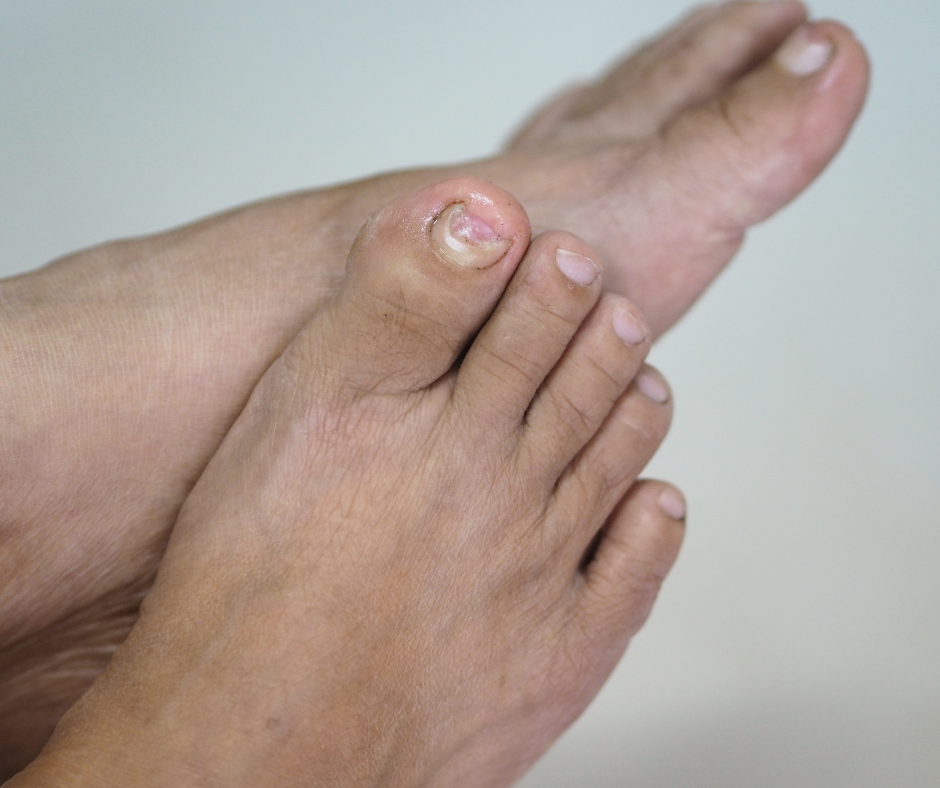Fungal toenail infections (onychomycosis) are one of the most common foot conditions, affecting millions of people each year. While it may start as a small white or yellow spot under the nail, if left untreated, it can worsen and become difficult to treat.
Many people ignore early signs of a fungal infection, thinking it will go away on its own—but it won’t. The longer you wait, the more the fungus spreads, thickens the nail, and becomes resistant to treatment. Early intervention is the key to stopping the infection before it causes long-term nail damage.
In this post, we’ll discuss:
✔ Why early treatment is crucial
✔ Signs of a fungal toenail infection
✔ Available treatment options
✔ Why multimodal therapy is the most effective approach
Why You Should Treat Fungal Toenails Early
Fungal infections don’t go away on their own. Instead, they progress deeper into the nail and nail bed, making treatment more challenging. Here’s why you should act fast:
🔹 The infection spreads – It can spread to other nails, the skin (causing athlete’s foot), or even to other people.
🔹 Nails become thick and brittle – Untreated infections cause thickened, crumbly nails, leading to discomfort and difficulty trimming.
🔹 Increased risk of pain & secondary infections – If left untreated, the nail can separate from the nail bed (onycholysis), leading to pain and bacterial infections, especially in people with diabetes.
🔹 Treatment is easier & faster in early stages – Mild infections respond much better to treatment than severe, long-standing fungal infections.
How Do You Know If You Have a Fungal Toenail Infection?
Look for these early signs of onychomycosis:
✅ Yellow, white, or brown discoloration of the nail
✅ Thickened, brittle, or crumbly nails
✅ White streaks or spots on the surface of the nail
✅ Distorted nail shape
✅ Foul odor from the toenail
✅ Separation of the nail from the nail bed (lifting or detachment)
If you notice any of these symptoms, don’t wait—schedule an appointment for evaluation and early treatment.
Treatment Options for Fungal Toenails
There is no quick fix for fungal toenail infections, but with the right treatment plan, you can successfully eliminate the fungus and regrow a healthy nail. The best approach depends on the severity of the infection, your medical history, and your lifestyle.
1. Oral Antifungal Medications (Most Effective for Moderate to Severe Cases)
What it does: Kills the fungus from within by entering the nail bed through the bloodstream.
Common options:
Terbinafine (Lamisil) – Most effective oral antifungal, taken daily for 12 weeks or pulse dosed one tablet for 7 days per month.
Fluconazole (Diflucan) – Another option, sometimes used for patients who cannot take terbinafine. Typically taken weekly for several months instead of daily.
Success rate: 60-70% clearance when taken properly.
Downside: Requires liver function monitoring in some cases due to potential side effects.
2. Prescription Topical Antifungals (Best for Mild to Moderate Cases)
What it does: Applied directly to the nail to kill the fungus over time.
Common options:
Jublia (efinaconazole) – A daily liquid application that penetrates the nail.
Tavaborole (formerly Kerydin, now generic and reasonably priced) – A daily topical treatment that is now more affordable as a generic option.
Success rate: 40-50% clearance, often combined with oral medication or laser for better results.
Downside: It may take 12 to 24 months of consistent use to see full resolution, as nails grow slowly (1-2mm per month).
3. Laser Therapy (Fast, Non-Invasive, & No Side Effects)
What it does: Uses targeted laser energy to penetrate the nail and kill fungal spores without damaging surrounding tissue.
Why it’s effective:
✅ Painless, quick treatment (15-30 minutes per session)
✅ No side effects (unlike oral medications)
✅ Can be used in combination with topicals or oral antifungals for better resultsSuccess rate: 50-70% clearance when combined with other treatments.
Downside: Multiple sessions are needed, and results take time as the nail grows out.
Why Multimodal Therapy Works Best
Since fungal infections are stubborn, using a combination of treatments offers the best chance of completely eliminating the infection and preventing recurrence.
The Best Multimodal Treatment Plan
✔ Oral antifungals to target the infection from within (if needed)
✔ Prescription topical antifungals for daily nail penetration
✔ Laser therapy to kill fungal spores deep within the nail
✔ Debridement (nail trimming & thinning) to allow better penetration of topicals
✔ Preventive measures to stop reinfection
This comprehensive approach gives the highest chance of full clearance while preventing new fungal growth.
How to Prevent Fungal Toenail Reinfection
Once you’ve treated the infection, it’s crucial to prevent reinfection. Fungus thrives in warm, moist environments, so taking the right precautions can keep your nails healthy.
Daily Prevention Tips:
✔ Keep your feet dry – Change socks regularly and avoid sweaty shoes.
✔ Use antifungal powders or sprays – Apply inside your shoes daily.
✔ Disinfect your shoes – UV shoe sanitizers or antifungal sprays help eliminate lingering spores.
✔ Avoid walking barefoot in public places – Pools, gyms, and locker rooms are common sources of fungal infections.
✔ Trim your nails properly – Keep them short and clean, but avoid cutting them too close to the skin.
✔ Wear breathable shoes & moisture-wicking socks – This prevents excessive sweating and fungal growth.
Final Thoughts: Don’t Wait—Treat Fungal Toenail Infections Early!
If you suspect you have a fungal toenail infection, the sooner you seek treatment, the easier and faster it will be to eliminate the fungus. Waiting too long allows the infection to worsen, spread, and become more resistant to treatment.
At Lighthouse Foot and Ankle Center, we offer a comprehensive, multimodal approach to treating fungal toenails—including oral and topical antifungals, advanced laser therapy, and prevention strategies.
📍 23 Spring St. Suite B, Scarborough, Maine 04074
📞 207-774-0028
🌐 www.lighthousefootandankle.com
Schedule an appointment today and take the first step toward healthy, clear nails!


